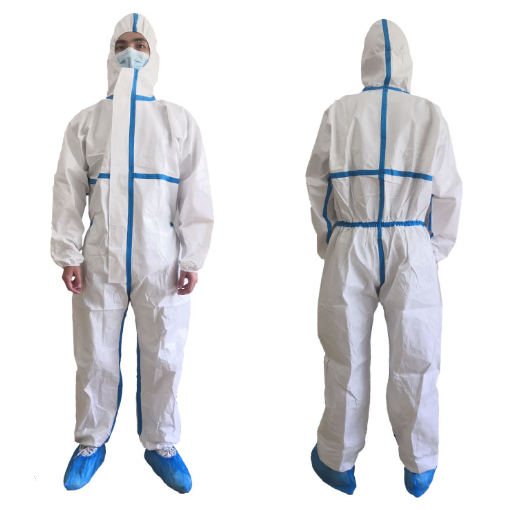unisex medical coverall

A unisex medical coverall is a full-body protective garment designed for both men and women in healthcare settings to protect against contaminants, fluids, and pathogens. These coveralls are made of materials like SMS or microporous fabric, often featuring a front zipper, elastic cuffs and ankles, and a hood to provide a barrier for infection control and to protect both the wearer and the patient. They are frequently disposable, lightweight, and designed to be worn over other clothing, offering a versatile and convenient option for medical personnel.
Key features
Gender-neutral design: They have a universal fit, designed for both men and women, and come in a wide range of sizes.
Full-body coverage: They cover the entire body, from the neck to the ankles, to provide comprehensive protection.
Protection: They offer a barrier against blood, body fluids, germs, and other infectious agents.
Convenient features: They typically have a full-length front zipper for easy on and off, and elastic in the cuffs, ankles, and sometimes the hood for a snug fit.
Material: They are made from lightweight, breathable, and fluid-resistant materials like SMS (Spunbond-Meltblown-Spunbond) or microporous fabric.
Disposable: Many are designed for single-use, which helps prevent the spread of infection and simplifies cleanup.
Other PPE: They are often used in conjunction with other personal protective equipment (PPE) like gloves, masks, and shoe covers

To use a unisex medical coverall, first ensure the correct size and wear it over your clothing, pulling the legs on first, then the arms. Next, zip it up completely and pull the hood up, making sure it covers your head and neck. Finally, put on gloves and pull the cuffs over the coverall sleeves to create a seal, using thumb hooks or tape if necessary to prevent any gaps:
Before you put on the coverall
Choose the correct size: The coverall should be large enough for you to move freely without it being too tight or too loose.
Prepare for donning: Remove any jewelry and pull long hair back, then perform hand hygiene.
Put on undergarments and footwear: Wear other necessary PPE like boots, and tuck the bottoms of your pants into your socks to prevent gaps between the coverall legs and footwear.
How to put on the coverall
Step in: Step into the coverall legs one at a time, pulling it up to your waist.
Pull on sleeves: Insert your arms into the sleeves, pulling the coverall up over your shoulders.
Zip it up: Zip the coverall all the way to the top. If it has a protective flap, ensure it is closed over the zipper.
Put on hood: Pull the hood up over your head, making sure it fits smoothly and covers all hair and exposed skin.
Put on gloves: Put on your gloves. If the coverall has thumb hooks, place your thumbs through them to secure the sleeve cuffs over the inner glove cuffs.
Seal the cuffs: Ensure the glove cuffs are completely covering the coverall sleeve cuffs. If thumb hooks are not available, you can use tape to seal the connection and prevent gaps.
Final check: The observer should visually confirm that the entire suit is properly sealed and no skin is exposed.

 Send Email
Send Email